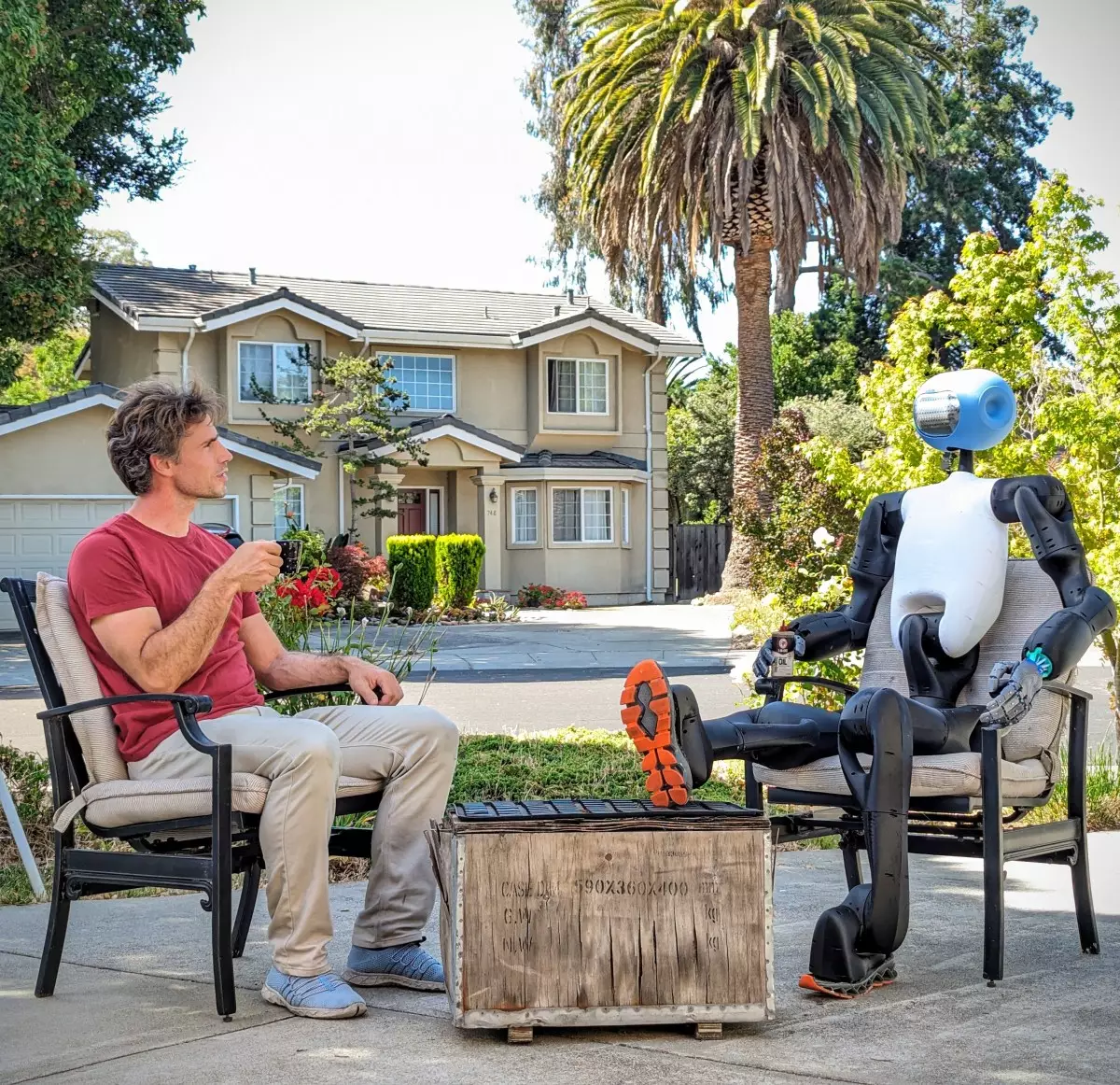Stepping into Christoph Kohstall’s cluttered garage in Palo Alto feels like a plunge into the spirit of entrepreneurial creation. A mishmash of electrical components, tools, and whimsical robot parts greets visitors, showcasing a workspace that embodies the essence of innovation. On one side, a mountain of blinking electrical components looms, hinting at ongoing experiments, while a workbench scattered with machining tools reflects the hands-on nature of robotics development. Above, a ceiling-mounted gantry system—a staple in robotics labs—indicates the serious intent behind this seemingly chaotic environment.
Kohstall’s Kind Humanoid, a three-person startup, has taken an unconventional route in the robotics sector, moving beyond traditional models. He mentions how once upon a time, they had to employ an $80 coat rack for testing purposes, an amusing example of the resourcefulness that often permeates startup culture in tech-dominated regions like Silicon Valley. This blend of humility and creativity hints at a deeper narrative within the burgeoning world of robotics—a dedication to innovation, irrespective of the constraints posed by budget or conventional expectations.
Kohstall’s journey is not just about building robots; it’s about crafting distinctly human-like machines that can fit seamlessly into domestic environments. With his background in the high-pressure world of Google Brain, one might expect clinical efficiency, but what’s emerging in his garage is a distinctive and almost playful approach to robotics. Recently, renowned designer Yves Béhar visited Kohstall’s workspace and was instantly captivated by the emerging robots—a testament to the untamed creativity taking center stage here.
Béhar’s subsequent collaboration with Kind Humanoid manifested in the renderings of a humanoid robot—named Mona—that combine whimsical design with advanced functionality. The aesthetic choices reflect a unique philosophy; the robot has a friendly appearance, with a delve into non-threatening design that steers clear of the “uncanny valley” trap that haunts many humanoid projects. Employing an artsy lens, Béhar drew inspiration from René Magritte, merging dreamlike visuals with a practical purpose. This approach resonates deeply within the ethos of what Kind intends to accomplish.
In a marketplace dominated by industrial-grade robotics, Kohstall envisions a radically different path—targeting home caregivers instead. This is a sector largely overlooked by major robotics manufacturers, which tend to focus on more lucrative industrial markets. Kohstall outlines a vision where Mona assists in aging in place, offering support in scenarios rife with environmental challenges—stairs, cluttered spaces—where most robots struggle.
“Humanoids shine in diverse and unpredictable environments,” he states, emphasizing that a dedicated humanoid robot can navigate complex household landscapes far more effectively than specialized robots designed for singular tasks. This notion feeds back into the idea that not all robotics innovations need to compete in the crowded industrial marketplace; there exists valuable potential in addressing domestic challenges that technology hasn’t yet adequately tackled.
As Kind Humanoid sets its sights on producing an initial batch of Mona robots for real-world tests, it’s evident that Kohstall’s passion for experimentation is integral to the process. The team’s indifference toward traditional fundraising methods denotes a deliberate choice to prioritize creative innovation over monetary influx. “We prefer to operate within our means and let the innovation process dictate our growth,” Kohstall explains.
This philosophy has significance within the broader narrative of tech startup culture in Silicon Valley, where fundraising often supersedes the creative process, leading to rushed, half-baked products. Kohstall’s approach, juxtaposed against the backdrop of high-stakes funding games, is a refreshing divergence—it champions the ethos that true innovation often springs from resourcefulness and dedication, rather than sheer financial backing.
Despite considerable challenges, the future holds promise for Kohstall and Kind Humanoid. The field tests slated for the coming year represent an exciting turning point, offering a glimpse of how the humble garage innovation can evolve into groundbreaking technology. However, the journey is just beginning, and as Kohstall transitions from the prototypical DIY era to refined designs reminiscent of Béhar’s concepts, the challenge remains: Can they bridge the gap between charming frankenbots and market-ready mechanisms?
In this enchanting chaos of creation lies the potential for true evolution within robotics. A recalibrated design philosophy, a commitment to real-world applications, and a robust sense of creativity may just allow Kind Humanoid to redefine what it means to integrate robots into our daily lives. The road may be rocky, but Kohstall’s relentless pursuit of innovation signals an inspiring trend in the future of humanoid robotics—a trend rooted in the very heart of technological advancement, characterized by a need for efficiency, human connection, and affordability.

